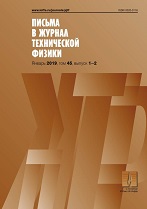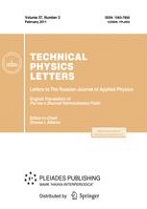|
This article is cited in 1 scientific paper (total in 1 paper)
Studying the surface conductivity of a thallium bilayer on Si(111) substrate after adsorption of lithium and rubidium
M. V. Ryzhkovaa, E. A. Borisenkoaa, M. V. Ivanchenkoab, D. A. Tsukanovab, A. V. Zotovab, A. A. Saraninab
a Institute for Automation and Control Processes, Far Eastern Branch of the Russian Academy of Sciences, Vladivostok
b Far Eastern Federal University, Vladivostok
Abstract:
Changes in the state of a thallium bilayer on Si(111) substrate, Si(111)6 $\times$ 6–Tl, after adsorption of lithium and rubidium were studied using low-energy electron-diffraction and four-point probe-conductivity measurements. New surface reconstructions 5 $\times$ 1 and 5$\sqrt3\times5\sqrt3$ were observed after the adsorption of lithium, and 2 $\times$ 2 and $\sqrt3\times\sqrt3$ reconstructions appeared after the adsorption of rubidium. The surface conductivity of silicon substrates was studied as a function of the dose of deposited adsorbate. It is established that the formation of both 5 $\times$ 1 and 2 $\times$ 2 reconstructions retains the conducting properties of a two-dimensional channel constituted by the thallium bilayer.
Received: 19.01.2018
Citation:
M. V. Ryzhkova, E. A. Borisenkoa, M. V. Ivanchenko, D. A. Tsukanov, A. V. Zotov, A. A. Saranin, “Studying the surface conductivity of a thallium bilayer on Si(111) substrate after adsorption of lithium and rubidium”, Pisma v Zhurnal Tekhnicheskoi Fiziki, 44:10 (2018), 12–19; Tech. Phys. Lett., 44:5 (2018), 412–415
Linking options:
https://www.mathnet.ru/eng/pjtf5800 https://www.mathnet.ru/eng/pjtf/v44/i10/p12
|


| Statistics & downloads: |
| Abstract page: | 39 | | Full-text PDF : | 13 |
|





 Contact us:
Contact us: Terms of Use
Terms of Use
 Registration to the website
Registration to the website Logotypes
Logotypes








 Citation in format
Citation in format 
